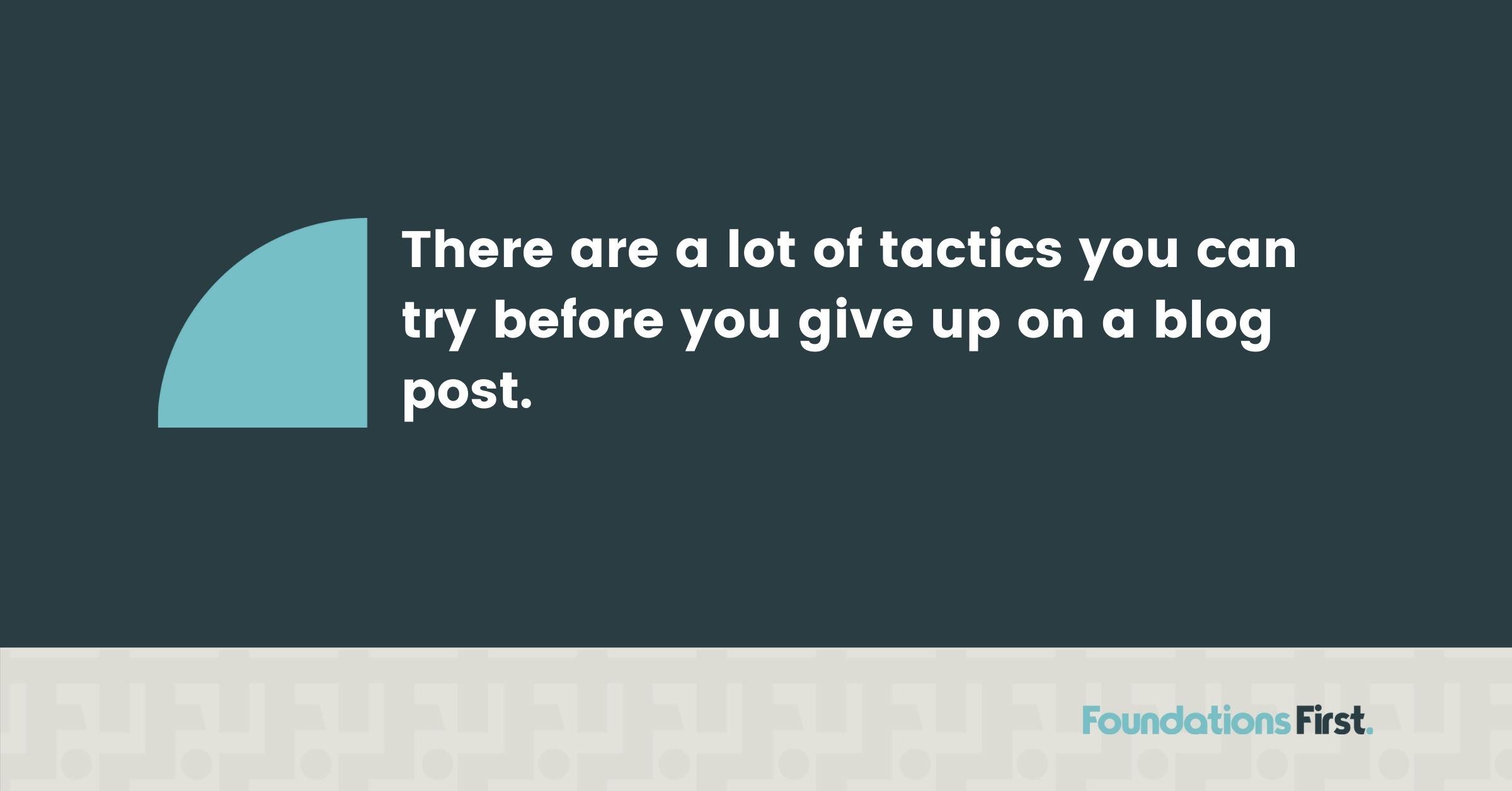3 Phases of Blog Measurement

Like any other marketing tactic, you need to know what’s working and what’s not. You want to minimize where you might be wasting time and money and maximize what’s bringing you the best return on your investment. Basically, we all want to do more of what’s working, and less of what’s not. Everyone knows tracking and measuring are important. Yet, of all the digital channels we work with, the least tracked is blog posts. There are actually 3 phases of blog measurement: measuring how well social networks perform, website analytics, and finally conversions. We’ll help you do the simple math, so you know if your time and money are well spent.
So, Why Are We Afraid of Blog Measurement?
Well, it’s personal.
It’s not because they can’t be tracked or analyzed with numbers. It’s because there’s so much personal energy invested in blogging.
Those are your words on the page with your thoughts and ideas. You are putting you or your company out there and it’s scary. We don’t fault anyone for being scared of negative feedback. A negative comment about your blog post can pretty much ruin your day. Not to mention that negative comment was likely on a very public social media network for the world to see.
So, what do you do after that negative comment? You take a deep breath, get back up, and write more content. Think about it. If someone’s writing a negative comment to you or about you, at least they are reading your blog and engaging with it!
Haters aside, there is equal fear that no one is reading the blog. But take heart, you can learn from silence, too. If people aren’t interacting with your blog, try a different topic, try sharing it differently, or maybe switch up the graphics. There are a lot of tactics you can try before you give up on a blog post.
We know it’s scary when people read your blog, and we know it’s scary when they don’t.
Yet, let’s pretend for a second that all your fears melted away and you’re ready to take an honest look at your numbers. Here’s what to look for.
3 Primary Phases of Blog Measurement
Phase 1: Measuring the Social Networks
The first phase is to evaluate how social networks are performing. We analyze likes, comments, shares, and clicks. A lot of data is required for this phase since data drives our decisions on how to move forward. This phase of blog measurement tells us if the topic is relevant, if the topic is of interest to our target audience and whether or not a post performs well.
If all that checks out on social media, then we know we’re on the right track and are ready to move on to the next phase.
If all of your social posts get 10 likes and it’s pretty consistent, then it’s time to try something new until you get some bigger numbers. Interested in learning more? Check out our blog post about small data sets!
Phase 2: Measuring What Happens Once People Get To Your Blog Post
The next step includes website statistics.
- During this phase, we look to see where the visits came from. It tells us how visitors found your blog post. Sources might be social media, a Google search, or another website.
- We also examine how much time is spent reading the post – also known as time on the page. This information gives us an idea of how many people are truly engaging with the content. For example, let’s say you get a lot of social media engagement and a ton of clicks to the blog post, but the average time on your page is only 5 seconds. What gives? Here are a few possibilities:
- Perhaps the title and imagery you shared on social is really good, but the post itself didn’t deliver.
- Maybe people wanted screen shots in your post.
- Your blog might have been too text heavy without clear headings and looked like a lot of work to consume the information.
Since you know the topic is of interest, you don’t throw it all away. Instead, you rework the blog post and re-share it next month.
In this example, if you didn’t check your Phase 2 stats, you might think that the piece of content is the bee’s knees. After all, it’s going crazy on social networks. Somewhat rationally, you might even decide to boost that post to really get it out there.
Unfortunately, here’s the downside to those good intentions. You’re spending time and money on a piece of content that simply isn’t doing much for you. In reality, it might only be doing 30% of what it really could. Sure, it’s making your Phase 1 stats look great, but it isn’t engaging your audience or converting them to customers – which leads us Phase 3.
Phase 3: Measuring Conversions
Conversions are anything from form submissions to actual sales. Conversions could be turning a visitor into a newsletter subscriber or someone registering for your upcoming webinar or custom demo.
At the end of the day, you need to watch how your Phase 1 data trickles down into conversion. Here’s a common example from small businesses:
7 hours per post
+ 4 posts per month
= 28 hours per month
x $30 per hour on the lower end
= $840 per month
Just for fun, let’s add in a boosting budget of $100. That brings our grand total up to $940.
Did we mention this is on the low of the end of estimates? What else could you spend that money on? Would something else bring you more new customers or leads for that same price?
Let’s take it a step further.
Pretend for that same $840 you get 10 visits – that’s $84 per visit. Not too bad, right? Well, here’s the kicker. If you’re the business owner, and you’re the one writing the content, your cost per hour is going to be way higher.
At $150 per hour, you’re looking at $430 per visit if you only get 10 visits from your blog post.
So do the math. Figure out what works and what doesn’t.
Need some help with your blog measurement?
Sometimes when your marketing foundations are in disarray, it’s hard to tell if your blog efforts are worth the trouble. Perhaps your blogs aren’t speaking to your target market. Or maybe your whole website doesn’t resonate with your audience. Sometimes a small tweak in your tracking and analytics gives you completely different information.
Underlying problems are common. We can help you uncover yours with our 20 foundational marketing elements audit. That audit can help you find cashflow leaks, missing or broken tactics, and opportunities you can leverage. We show you exactly what’s keeping you stuck and give you a prioritized plan to fix it.
If you suspect your problems run deeper than your blog, schedule a consult today.

Michelle Tresemer
Categories
- Analytics and Measurement
- Brand Messaging
- Competitor Analysis
- Content Marketing
- Digital Marketing Strategy
- Digital PR & Events
- Marketing Budgets
- Marketing KPIs
- Marketing News
- Marketing Rock Samples
- Marketing Staffing & Vendors
- Marketing Strategy
- Marketing Tech Stack
- Podcast
- Product Marketing
- Sales Marketing Alignment
- SEO
- Social Media
- Strategic Marketing Partnerships
- Target Markets
- Uncategorized
- Vision & Purpose
- Webmaster








